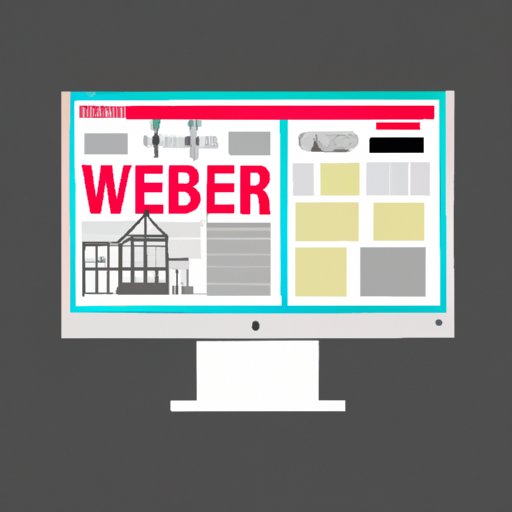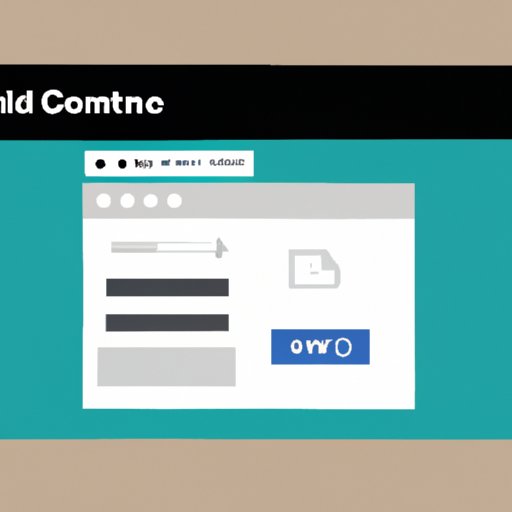Introduction
Having a personal website is a great way to showcase your work, share your thoughts, and connect with others online. But creating a website can be intimidating, especially if you’re new to web development. Fortunately, there are many options available that can make the process of developing a personal website much easier.
In this article, we’ll provide an overview of the steps involved in developing a personal website. We’ll cover topics such as choosing the right platform, registering a domain name, setting up hosting services, designing and building the website, adding content, promoting the website, and monitoring and maintaining the website.

Research Popular Platforms and Choose the Best Option for Your Needs
The first step in developing a personal website is to research popular platforms and choose the best option for your needs. There are a variety of platforms available, including WordPress, Squarespace, Wix, and Shopify, each offering different features and costs. Consider what kind of website you want to create and the features you need before deciding which platform is right for you.
Evaluate the features offered by each platform, such as ease of use, customization options, and customer support. Also consider the cost of the platform, as well as any additional fees or expenses associated with it. Once you’ve evaluated the features and cost of each platform, you can select the one that best meets your needs.
Select a Domain Name and Register It
Once you’ve chosen the platform for your website, the next step is to select a domain name and register it. A domain name is the address of your website (e.g., www.example.com). When selecting a domain name, make sure it’s memorable and easy to spell. Once you’ve chosen a domain name, you can register it with a domain registrar, such as GoDaddy or Namecheap.
Set Up Hosting Services
After registering your domain name, the next step is to set up hosting services. Website hosting is the service that allows your website to be accessed on the internet. When choosing a hosting provider, consider factors such as price, reliability, customer support, and scalability. Once you’ve chosen a hosting provider, you can set up your website hosting.

Design and Build the Website
Now that you have a domain name and hosting services set up, you can begin designing and building your website. Start by selecting a design template that matches the look and feel of your website. Then add content, graphics, and multimedia to the site. Finally, test the website to make sure it’s functioning properly.

Add Content to the Site
Once the website is built, the next step is to add content to the site. Create quality content that is interesting, informative, and engaging. Optimize the content for search engines by using relevant keywords and phrases. Once the content is optimized, you can publish it on the site.
Promote Your Website
The next step is to promote your website. Leverage social media platforms such as Facebook, Twitter, and Instagram to reach a wider audience. Utilize email and newsletter marketing to stay in touch with existing and potential customers. You can also advertise with paid ads, such as Google Ads or Facebook Ads.
Monitor and Maintain the Website
Finally, monitor and maintain the website. Track website performance with tools such as Google Analytics and Webmaster Tools. Audit content regularly to ensure it’s up-to-date and accurate. Update content and software to keep the website secure and running smoothly.
Conclusion
Creating a personal website can seem intimidating, but it doesn’t have to be. By following the steps outlined in this article, you can easily develop a professional-looking website that will help you reach your goals. Research popular platforms, register a domain name, set up hosting services, design and build the website, add content, promote the website, and monitor and maintain the website.
By taking these steps, you can create a website that will help you showcase your work, share your thoughts, and connect with others online.
(Note: Is this article not meeting your expectations? Do you have knowledge or insights to share? Unlock new opportunities and expand your reach by joining our authors team. Click Registration to join us and share your expertise with our readers.)
